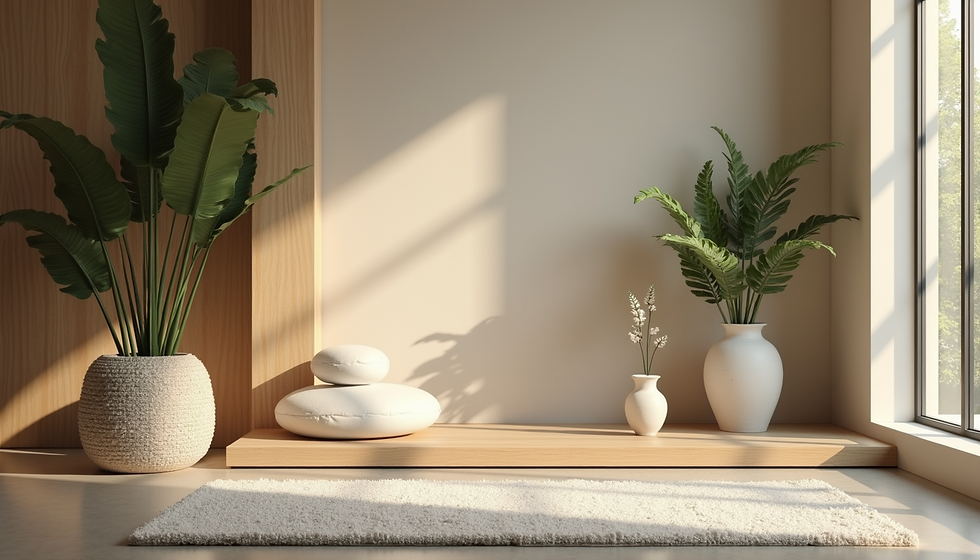Unlocking Movement: Designing Effective Training Through Chain Reaction Biomechanics
- Mar 20, 2021
- 3 min read
Updated: Aug 27, 2025
Do you ever stop to think about how you move throughout the day? Whether you're picking up groceries, playing with your kids, or exercising, your body instinctively combines different muscles to perform tasks. This natural instinct should form the basis of your training programs. Instead of concentrating on which muscles to activate, focus on movements that allow your body to engage those muscles naturally. By grasping the principles of Chain Reaction Biomechanics, you can develop exercises that optimize muscle engagement through precise joint motions.
Understanding Chain Reaction Biomechanics
Chain Reaction Biomechanics highlights how all our body parts work together in movement. Every joint and muscle coordinates with others to create smooth actions. For example, the left gluteal muscles play a key role in various movements:
Hip Extension in the sagittal plane.
Abduction in the frontal plane.
External Rotation in the transverse plane.
To effectively target these muscles, we must design movements that involve their opposing actions, like flexion, adduction, and internal rotation. In this way, we enhance not just muscle targeting but also functional movement patterns that mirror real-life activities.

The Power of Lunging
A well-known training exercise, the lunge, beautifully illustrates these biomechanical principles. When executed correctly, a lunge can be adapted to trigger specific joint actions:
Anterior Lunges: Focus on hip flexion to engage the glutes effectively, which can lead to increased strength by as much as 15% after consistent practice over a few weeks.
Lunging to the Right: This action in the frontal plane promotes left gluteal activation by engaging adductor muscles, increasing stability and balance.
Rotational Lunges: When lunging and rotating to the right, you encourage internal rotation of the hip, which can improve range of motion by nearly 10% in most individuals.
By understanding and manipulating these mechanics, we can create lunging exercises that not only build strength but also stretch the targeted muscles.
Enhancing Movement with Arm Actions
Incorporating arm movements into our lower body exercises can greatly amplify their effectiveness. This approach, known as the “bottom-up” method, leverages ground reaction forces, while the “top-down” motion from the arms aids in overall engagement:
To improve your lunges, consider these arm actions:
Reach Forward: This enhances hip flexion and increases the intensity of the lunge, engaging more core muscles.
Swing Arms Overhead and to the Side: This promotes adduction, activating the glutes further, thus enhancing coordination.
Rotate Arms to the Opposite Side: This action facilitates internal rotation, emphasizing muscle lengthening and improving balance.
By combining these movements, you create a dynamic training session that engages multiple muscle groups and builds functional strength.

Designing Effective Training Programs
When developing a training program, the key is to design movements that promote optimal joint motion. This helps not only in muscle activation but also in making movements relevant to real-life scenarios. Here are essential steps to consider:
Identify the Task: Establish the specific activity you want to improve, like running, lifting, or playing sports.
Analyze Joint Motions: Break down the movement into its main actions, especially those that matter most for your specific goals.
Select Appropriate Movements: Choose exercises that mimic the necessary joint motions to effectively engage target muscles.
Incorporate Variability: Introduce variations like different lunging angles to keep the body adapting and progressing.
Monitor Progress: Regularly evaluate how well the program is working and make tweaks as necessary based on observable results.
Following these steps will help you create a robust program that builds strength while enhancing overall movement quality.
Moving Forward
Understanding Chain Reaction Biomechanics is vital for crafting effective training programs. By focusing on task-oriented motions that encourage the right joint movements, we can engage and stretch our muscles more efficiently.
Bringing in arm movements and diversifying training patterns can also enhance your overall experience, making workouts more functional and enjoyable. By appreciating the mechanics of human movement, we can unlock our full potential and reach fitness goals more effectively.
Embrace this method to transform your training into a richer and more valuable experience.







Comments